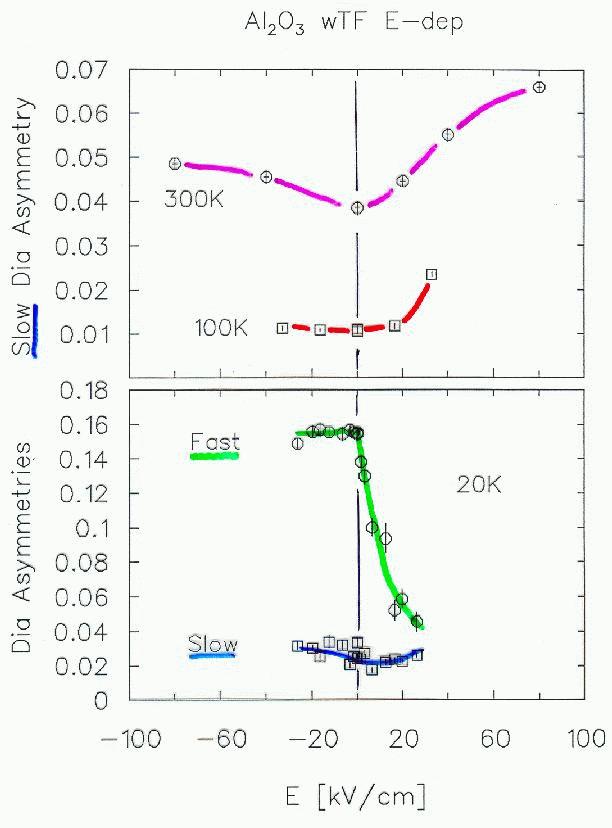
At low temperature, Mu formation from radiolysis electrons takes place over a longer time and can be observed directly in the decay of the diamagnetic muon precession signal. The rate of formation (presumably governed primarily by the effective mobility of the electronic polaron as it is "sucked in" by the muon's electic field) has an Arrhenius-like temperature dependence with an activation temperature of 140(1)K, suggesting classical "over-barrier" hopping as a diffusion mechanism. A slowly-relaxing diamagnetic signal is also present at low temperature, presumably representing those muons which stop further than one Onsager radius from the last radiolysis electron created in their path.

This was the picture until late 1997, when the electric field dependence of delayed Mu formation was studied in sapphire at low temperature (20K) where both the Fast and Slow relaxing diamagnetic components can be observed independently. As expected, the Slow component is essentially unaffected by E; but the Fast component has a dramatic E-dependence exactly opposite to that of slow-relaxing component at high temperature. If you can figure out why, please drop me a line!